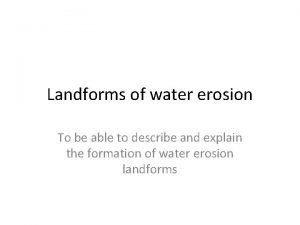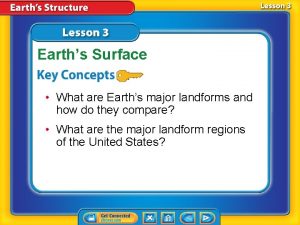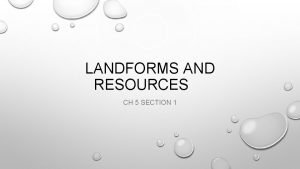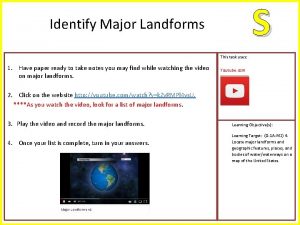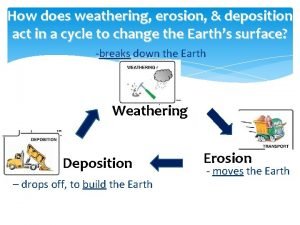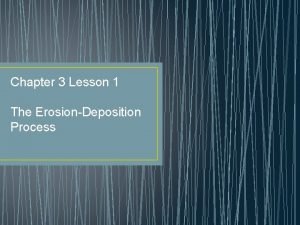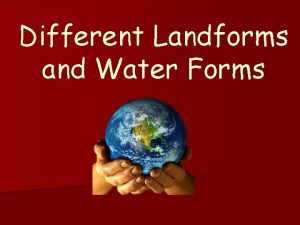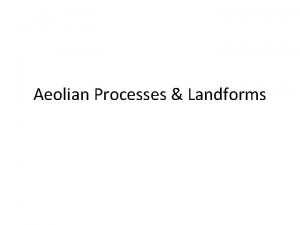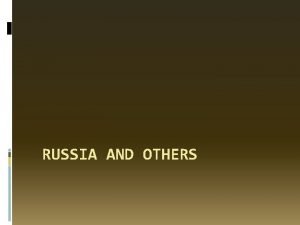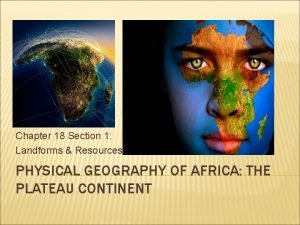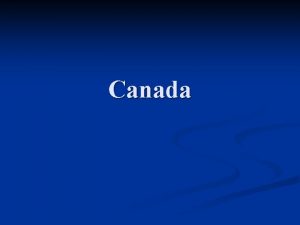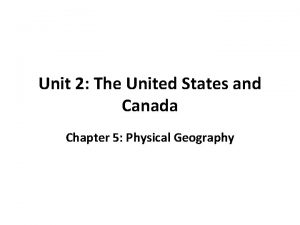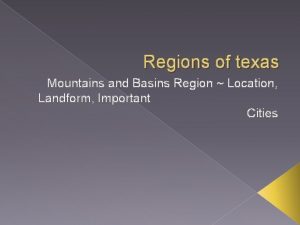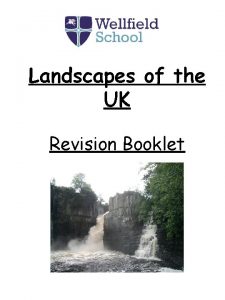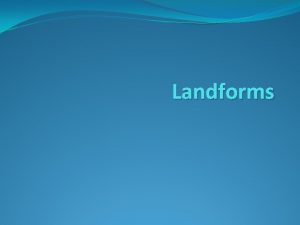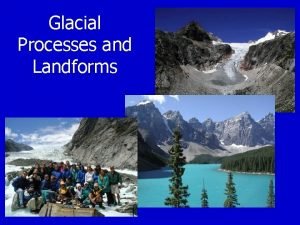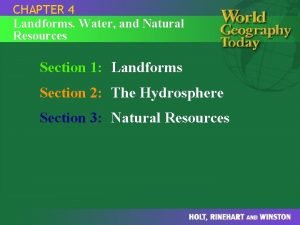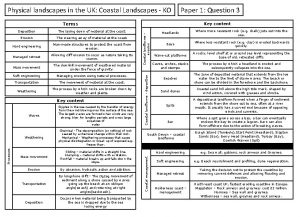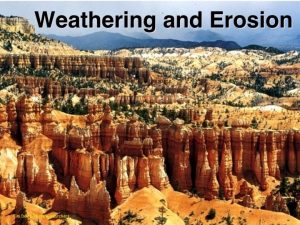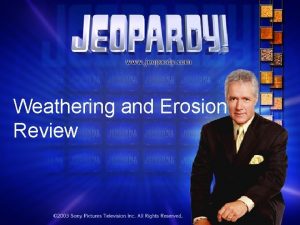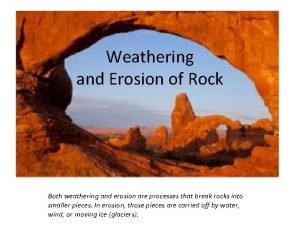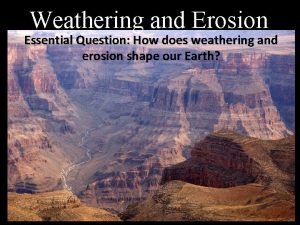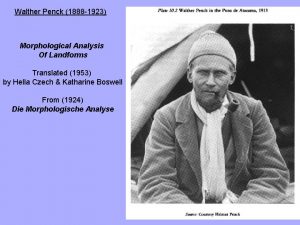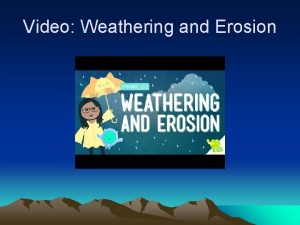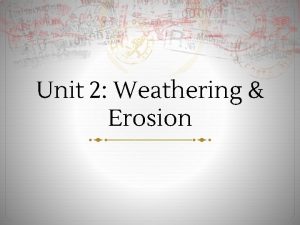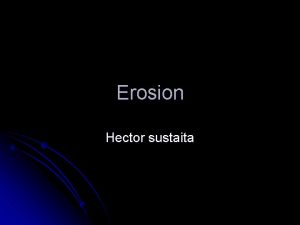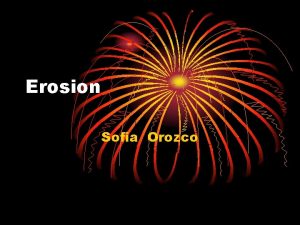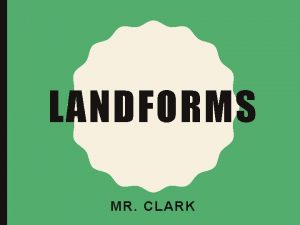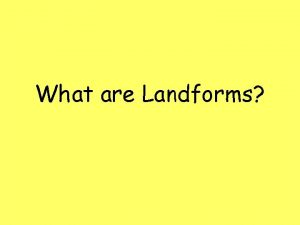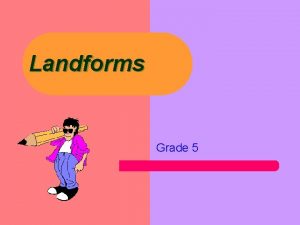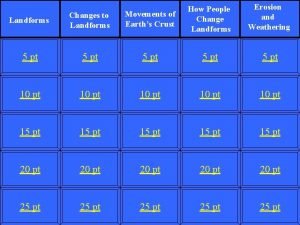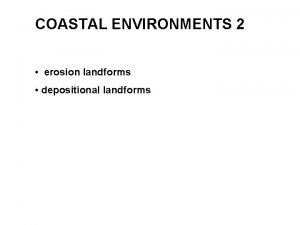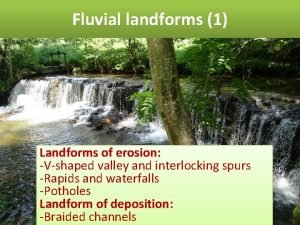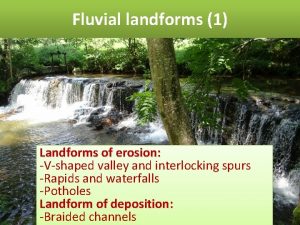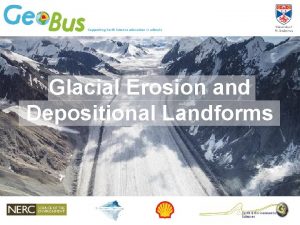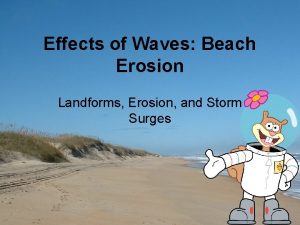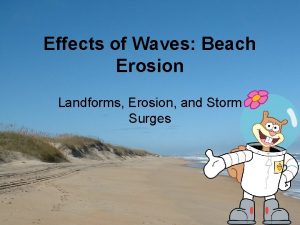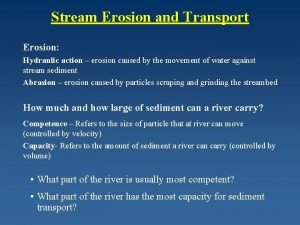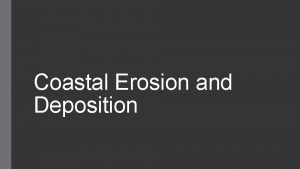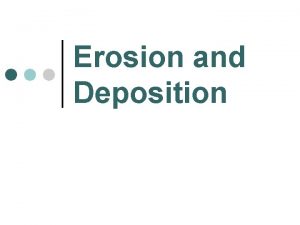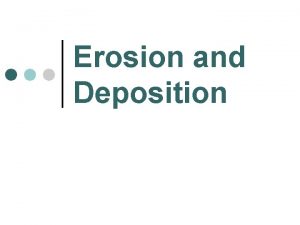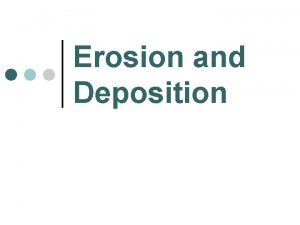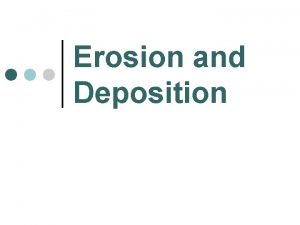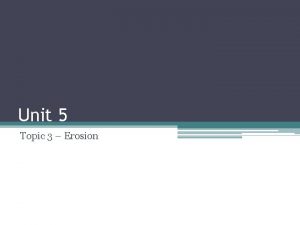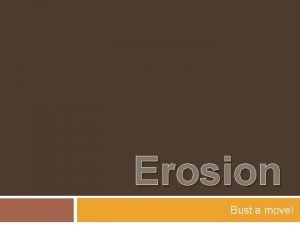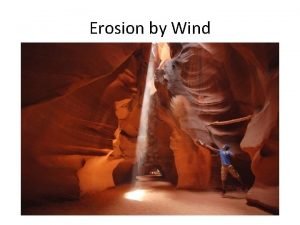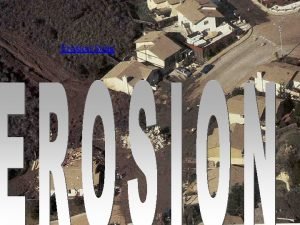Erosion and Landforms Erosion and Landforms Key Question









































- Slides: 41

Erosion and Landforms

Erosion and Landforms • Key Question: What is erosion and what are the types of erosion? • Initial Thoughts:

Evidence • Glue the student notes handout into your journal. • Take notes from the Power. Point Presentation.

Evidence • What is Erosion? • The process by which weathered rock and soil particles are moved from place to place. • What is Deposition? • The process by which weathered sediments are laid down in a new location creating new landforms.

5 Agents of Erosion There are five agents of erosion. • Gravity • Glaciers • Wind • Surface Water / Running Water • Ocean Shoreline / Ocean Waves

Gravity • Pulls rock and soil down a slope • Called Mass Movement • Rapid • Rockslides • Mudflow • Avalanche


Gravity Slow • Slump • Creep

Glaciers • Carry very large to very small debris • Most powerful agent • What do they deposit? • Form piles called moraines • Drumlins – little mounds • Glacial lakes • Kettle lakes • U-shaped valleys

Moraines

Drumlins Glacial lakes

Kettle Lakes U-shaped valleys

Glaciers

Wind • Removes loose material from the earth’s surface. • Amount of material carried depends on wind speed • Most active in deserts, deserts plowed fields, beaches • What does wind deposit? • Loess- layer of fine silt or sand • Dunes- mounds of sand

Loess

Dunes

Running Water • MAJOR CAUSE OF EROSION • When water moves it carries particle called the load • Speed of water determines the size of the load • Creates canyons and valleys • What do rivers create/deposit? • Deltas • Oxbow lakes • Flood plains

River Deltas

Oxbow Lakes

Flood Plains

Waves • Constantly erode and shape the shoreline. • What formations do waves create? • Sea cliffs • Sea stacks and caves

Sea Stacks

Sea Stacks & Cliffs

Cape Flattery, Olympic Peninsula Sea Caves

Waves What do waves deposit? • Beaches • Spits • Sand bars • Barrier Islands


Barrier Islands

Spits & Sandbars

Coral Islands • Lava from an underwater volcano builds up an island. Living organisms begin living around the shores of the island (polyps). • Volcano becomes inactive, sinks, coral dies, an island forms. • The formation is a hard rock-like material formed by the skeleton of marine polyps and sand (takes millions of years!)

Coral Islands • Usually forms a ring and partially or totally encloses a shallow body of water, or lagoon • Most are found in the Pacific Ocean

Limestone Deposits • Form underwater from the shells of dead animals • Takes millions of years!

Limestone Deposits

Oil/Coal Deposits • Plant matter accumulates at the bottom of a body of water (must be protected by from decomposition and oxygen exposure—usually gets covered by mud or an acidic water layer). Over millions of years, it forms into a hardened brownish black sedimentary rock.

Oil/Coal Deposits • Coal is a fossil fuel and is the largest source of energy and the largest source of carbon dioxide emissions • Coal is extracted from the ground by mining, either underground or in open pits.

Oil/Coal Deposits • Oil is generally formed from marine deposits and coal is generally formed from land vegetation.


Sources • http: //www. pbs. org/wgbh/nova/caves/form_bacteria. html

Analysis 1. List the causes of erosion. 2. Compare some major differences between the types of erosion.

Summary • What did you think about erosion before this lesson? • What did you learn about erosion from this lesson? (Minimum of 3 sentences!!!) • What are some further thoughts or questions you have about erosion?

Reflection • What is the difference between erosion and weathering? • What types of landforms are created by erosion?

Big Idea
 Level 1 costa questions
Level 1 costa questions Soil erosion diagram
Soil erosion diagram Butte vs mesa vs plateau
Butte vs mesa vs plateau Landforms with low relief and high elevation
Landforms with low relief and high elevation Landforms of the southwest
Landforms of the southwest Landforms and resources section 1
Landforms and resources section 1 Flocabulary landforms
Flocabulary landforms Erosion and deposition
Erosion and deposition Key partners example business model canvas
Key partners example business model canvas Business model canvas tripadvisor
Business model canvas tripadvisor Closed question and open question
Closed question and open question Lesson outline the erosion-deposition process answer key
Lesson outline the erosion-deposition process answer key Question words present simple
Question words present simple Remarks adalah
Remarks adalah Example of factor relating question
Example of factor relating question Direct and indirect questions
Direct and indirect questions Compelling question example
Compelling question example Compelling question examples
Compelling question examples Pragmatics exercises with answers
Pragmatics exercises with answers Chapter 24 section 1 landforms and resources
Chapter 24 section 1 landforms and resources Different kind of water forms
Different kind of water forms Chapter 27 physical geography of east asia
Chapter 27 physical geography of east asia Zeugen and yardang landforms are related to
Zeugen and yardang landforms are related to Landforms and resources section 1
Landforms and resources section 1 Chapter 18 section 1 landforms and resources
Chapter 18 section 1 landforms and resources Natural resources in the canadian shield
Natural resources in the canadian shield Unit 2 the united states and canada worksheet answers
Unit 2 the united states and canada worksheet answers Mountains and basins region landforms
Mountains and basins region landforms Landscapes and landforms booklet
Landscapes and landforms booklet Primary and secondary landforms
Primary and secondary landforms Glacial processes and landforms
Glacial processes and landforms Natural resources from landforms
Natural resources from landforms Landscapes and landforms
Landscapes and landforms Erosion in trans pecos
Erosion in trans pecos Boatero
Boatero Weathering and erosion jeopardy
Weathering and erosion jeopardy Bill nye
Bill nye Glaciers cause erosion by abrasion and
Glaciers cause erosion by abrasion and Walther penck
Walther penck Hydrolysis weathering definition
Hydrolysis weathering definition Weathering and erosion difference youtube video
Weathering and erosion difference youtube video Weathering and erosion questions
Weathering and erosion questions


